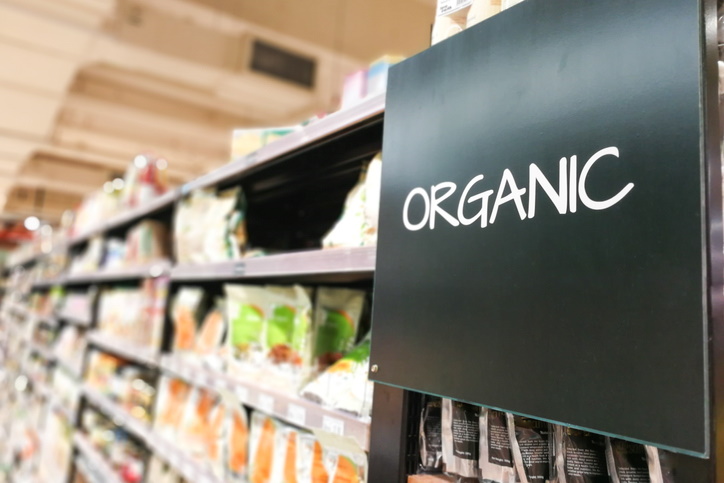In line with the growing demand for products derived from natural substances and processes, the EU organic sector increased by 70% in the last ten years. Data from the European Commission shows that organic retail sales reached 34 billion euros in 2017.
This trend is not going to stop, as the proposals for the future CAP and the “Farm to Fork” strategy strive to stimulate organic farming within the EU. The Commission has set a goal of having 25% of the EU’s agricultural land dedicated to organic farming by 2030.
These ambitious targets coincide with the entry into force of a new set of EU rules for organic production early next year. This new legislation does not really revolutionize the current legal framework, but it does consolidate the rules that apply to organic products, while also making some significant improvements.
History of EU organic regulation: an evolution towards higher standards
Organic production is a general system of agricultural management and food production that combines the best environmental practices, the preservation of natural resources and the application of high standards of animal welfare and high production standards, in accordance with recital 1 of the New Organic Regulation (EU) No 2018. / 848.
But the way European legislators define organic has evolved over several years. Organic farming was first submitted to an EU regulation in 1991, through Council Regulation (EEC) No 2092/91. At the time, organic standards only applied to unprocessed agricultural produce and foods made from plant-based ingredients.
Since 1999, this Regulation also includes non-processed animals and animal products and foods containing ingredients of animal origin within its scope.
In 2009, the original Organic Regulation was repealed and replaced by the current Council Regulation (EC) No 834/2007 on organic production and labeling or organic products, supplemented by two Commission implementing acts: Commission Regulation (EC) No 889/2008 laying down detailed rules on organic production, labeling and control and Commission Regulation (EC) No 1235/2008 laying down detailed rules on how to import organic products from third countries.
And now the European organic sector is preparing for the introduction of another update.
The new Regulation (EU) 2018/848 on organic production and labeling of organic products was adopted in spring 2018 and should have entered into force in January 2021. However, several delegated and implementing acts, supposedly to complete this new framework, they were not ready on time, mainly due to the many items that need to be specified and the high degree of detail required. Furthermore, the adoption of this secondary legislation requires a lengthy process of consultation with Member States and stakeholders, which had been held back by the COVID crisis in 2020. Operators also need time to adapt to these new rules, even if there are changes, compared to the existing rules will be established, transitional measures should be included.
To date, with a postponement of one year, this new legal framework is expected to enter into force on January 1, 2022.
Changes introduced by the New Organic Regulation
The main objectives of this new set of rules are to ensure fair competition for farmers while preventing fraud and maintaining consumer confidence in organic products.
The general objectives and principles of organic production remain the same in general, with, for example, promoting high standards of animal welfare, contributing to a high level of biodiversity, or restricting the use of external inputs. The contribution of organic production to protecting the climate, in addition to the environment, is now explicitly included in the legislation, in addition to promoting short distribution channels and local production.
The link between the soil and agricultural production is strengthened. For example, while hydroponic production is still prohibited, the exception for “demarcated beds”, traditionally used in some Scandinavian Member States, will be phased out.
For livestock, a greater quantity of feed must come from the farmer’s own farm or from the same region.
The derogation to the use of non-organic plant reproduction materials will no longer apply as of January 2036, it is revealed in Annex II of the New Organic Regulation. In order to promote genetic resources adapted to the special conditions of organic production, the new regulation introduces the possibility for farmers to use plant reproduction material obtained from their own farms, as well as plant reproduction material of heterogeneous organic material. The latter will be marketable without complying with the registration requirements in the plant variety catalogs, since a mere notification will suffice.
The organic control system will be in line with the new Official Control Regulations, with additional provisions for organic production. The annual physical inspection will be based on a risk-based assessment and will no longer be mandatory for all operators: low-risk farms or facilities can only be inspected every 24 months.
Finally, some important changes will affect imports of organic products, as third-country producers will have to comply with the same set of rules as those who produce in the EU. Some slightly strict rules have been adopted in relation to the production of processed foods.
We will examine these two topics in more depth in future articles.
Katia Merten-Lentz is a partner at Keller and Heckman and a member of the FoodNavigator Expert Advisory Panel.
.

